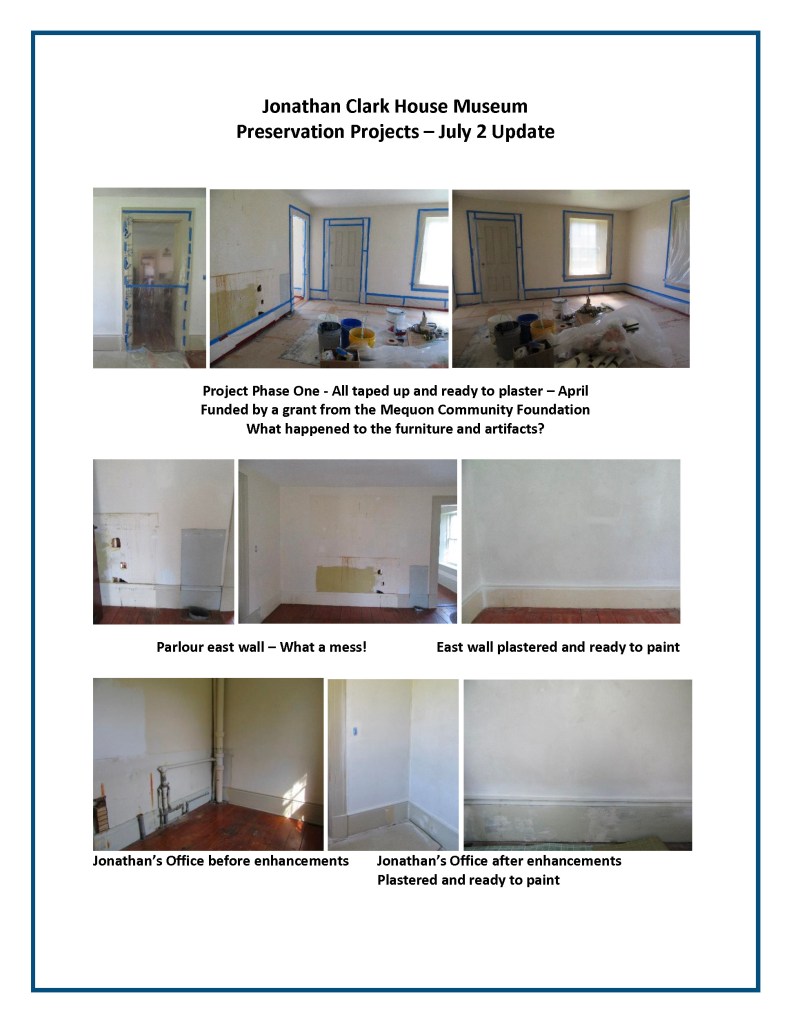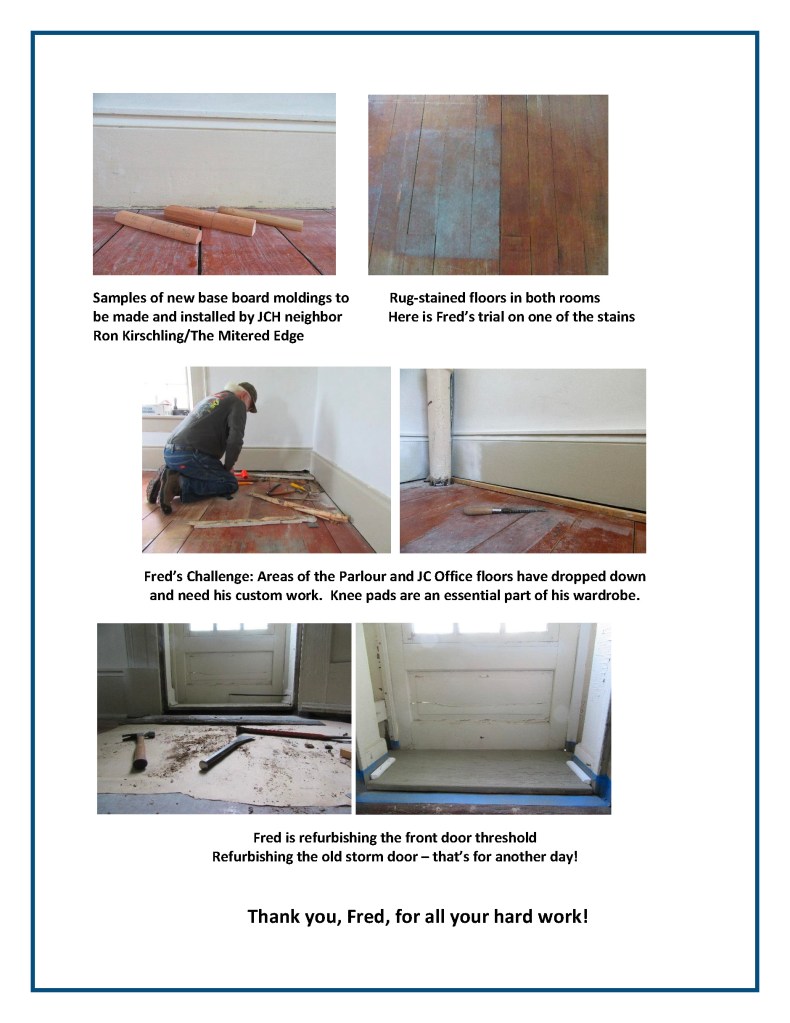Clark House News and an Update
I hope you enjoyed your Independence Day weekend. Our “Monday: Map Day!” feature is taking the week off. In its place, here is a round-up of some recent Jonathan Clark House news and a blog update/correction or two.
Three Cheers for Liz!
I was glad to assist Clark House museum director Nina Look in putting together this “tip of the hat” to Clark family descendant and stalwart Jonathan Clark House Museum friend and supporter Liz Hickman. This went out to Clark House board members and volunteers in mid-June, and I’m happy to share it with you here:

Fred’s Been Busy…
Due to the current Covid-19 situation, the Jonathan Clark House museum is, sadly, closed to the public. But the house is not completely quiet! Clark House museum preservation manager Fred Derr has been busy behind the scenes with a variety of preservation and restoration projects. Here are some details, courtesy of Nina Look:


Fred has been in charge of planning and done most of the work, though the museum did hire a professional plasterer—who used a technique close to what Jonathan and Mary would have used—to repair the damaged areas of the plaster walls. Next up: a new coat of paint.
Update: 19th-Century Army Acronyms
In case you missed it, I added an update/correction to our recent blog post “Census Records for the In-Between Years: 1836“. In that post, I noted that several of the junior officers in the 5th Regiment’s monthly “Return” paperwork were identified with the job title/acronym “A.C.S.” My original guess was that this might be something like “Acting Chief of Staff.” I was not at all sure about this at the time, so I took a look at the manual, namely General Regulations for the Army; or Military Institutes, published by the U. S. War Department in 1821. (You can read and download a free PDF of it at this link.)
Anyway (p. 258ff), it appears that A.C.S stands for Assistant Commissary of Subsistence. Each post, such as Fort Howard, would have at least one A.C.S or Acting A.C.S. That officer would be in charge of all the organizing, bookkeeping and accounting that were needed to obtain, store and dispense the various provisions necessary for the sustenance of all the members of the regiment (including officers’ families), namely food and an occasional gill—about 4 oz.—of whiskey. (Coffee was only listed among the “Hospital Stores” in the 1821 Regulations; it became part of the soldier’s rations in the revised General regulations of 1835.)
The A.C.S functioned within the Subsistence Department of the army. At the time of JMC’s enlistment, the Subsistence Department was separate from, but often operated in concert with, the Quartermaster’s Department. The Quartermaster’s Department was responsible for just about everything “non-food” in a soldier’s life: the buildings of the fort itself, the tools, arms, hardware, uniforms, horses, tack, and so on.
And on the same blog post, I tacitly corrected a few typos, most notably on the date of the July “Return of the …Regiment” paperwork; that document reports the Regiment’s information for July, 1836 (not 1834).
Reed –
Thanks for sharing our recent activities.
I miss all of our Friends and our “Heritage Days” fun.
Our 2021 “Heritage Days” will be awesome!
Nina Look, Director
LikeLike
Great photos – nice to see work that’s being done on the house. And three cheers for Liz!
LikeLike